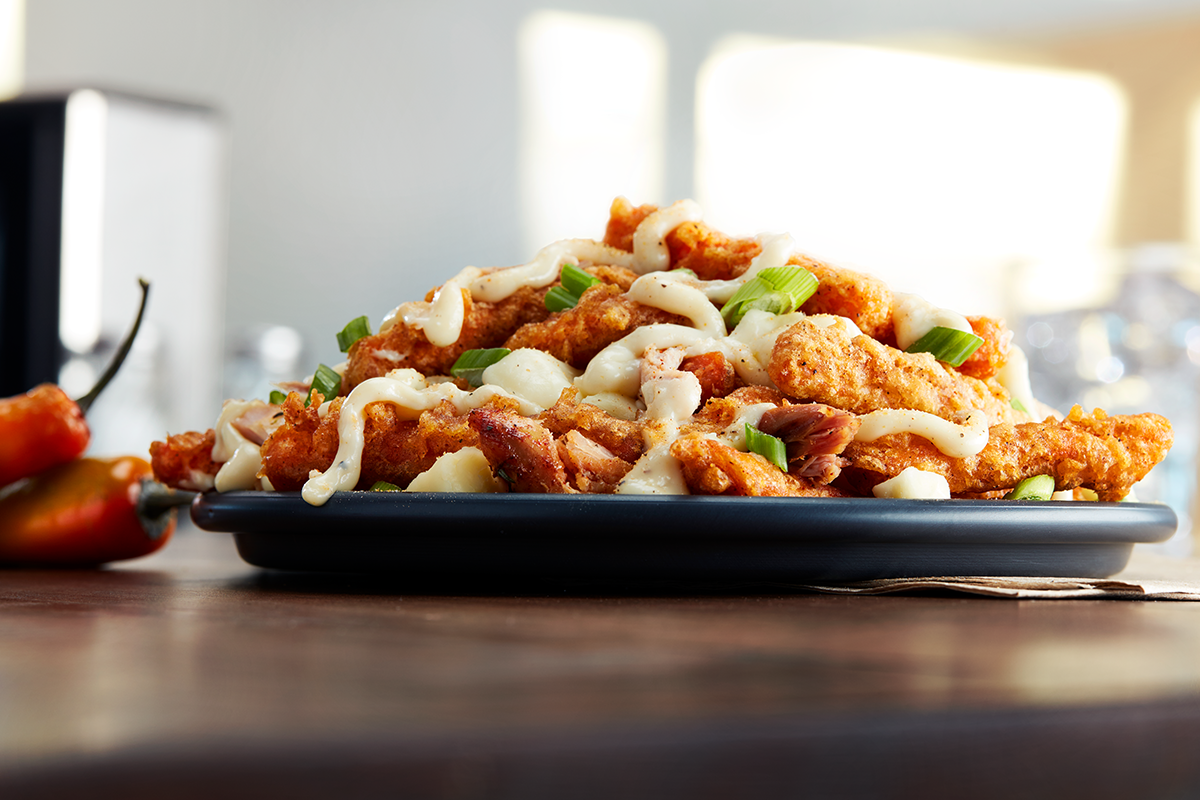Sponsored by Southeastern Mills.
Spicy food, for lack of better words, is hot right now. According to global flavoring company Kalsec, consumer interest in hot and spicy ingredients has increased 10 years in a row, with more than 22,000 new hot and spicy products introduced in 2017 compared to the 18,000 that were introduced in 2016.
“I think the trend has gone from shaking a bit of hot sauce on something to give it some heat to present day where consumers have a better understanding of how chili peppers can add depth and layering of both heat and flavor,” says Hadley Katzenbach, culinary development chef at food company Southeastern Mills.
This heat wave isn’t going away, she says. “The numbers speak for themselves. Once you develop an affinity for spicy foods, it tends to stick with you,” Katzenbach says.
With this surge in interest, spice-savvy consumers are refining their palates to new vehicles for heat. To meet those needs, the industry is taking inspiration from cultures around the globe like with the Signature Sriracha Buttermilk Crispy Chicken Sandwich introduced at McDonald’s in July 2017 taking cues from Asian cuisine. Restaurants are also exciting heat-loving customers with new flavor combinations like with Whataburger’s Spicy Strawberry Jam Chicken Biscuit combining a ground pork sausage patty topped with spicy strawberry jam, also introduced in July 2017.
According to global information company The NPD Group, 75 percent of U.S. adults—especially young adults—are willing to trying new foods, which opens the door for the foodservice industry to explore ethnic flavors and dishes with new strands of spice. But as more brands embrace these spicy global dishes, keeping up with the trends can be a challenge. That’s why many restaurants turn to vendors that are conducting research into trends to help them stay ahead of competition as they prepare for these major industry shifts.
For example, Southeastern Mills is seeing interest surge in the Korean fermented red pepper paste gochujang; Middle Eastern zhug, which includes jalapeños and cilantro; and North African hot chili pepper paste harissa. Also on trend are curries from all over India in varying spice levels and peri peri sauce from Africa and Portugal, consisting of crushed chilies. On the horizon, the company sees shichimi togarashi, a Japanese blend of dried chilies and spices, and the fruity and spicy aji amarillo peppers from South America making an impact on menus.
This research is helping Southeastern Mills create unique products that can help restaurants capitalize on these trends. “We’ll be looking to Africa and the Middle East for new spice blends such as Ethiopian berbere, za’atar, and Yemeni zhug,” Katzenbach says.
Restaurants, however, have to be aware of varying tolerances for spice among consumers. A smart strategy to take advantage of in this hot climate is heat customization, Katzenbach notes, in both the back and front of the house.
“Spicy is a relative term,” Katzenbach says. “Adjusting the heat level to the customer’s wish makes everybody happy. The American consumer often has several hot sauces depending on the application—Louisiana-style for eggs and pizza, Mexican hot sauce for Hispanic dishes, Asian hot sauce for Asian dishes.”
Americans can now readily distinguish between peppers such as jalapeño, habanero, Scotch bonnet, and chipotle, much more than they have in the past. With so many consumers now developing a discerning palate for heat, providing a variety of hot sauces from a selection of ethnic cuisines and heat levels, as Taco Bell has had success with, for the guest is one way to give consumers the heat and authenticity in flavor they increasingly desire.
To learn more about the history of hot sauce and its impact on the modern-day society, email egumbel@semills.com for more information about the Southeastern Mills Hot Sauce 101 course.













